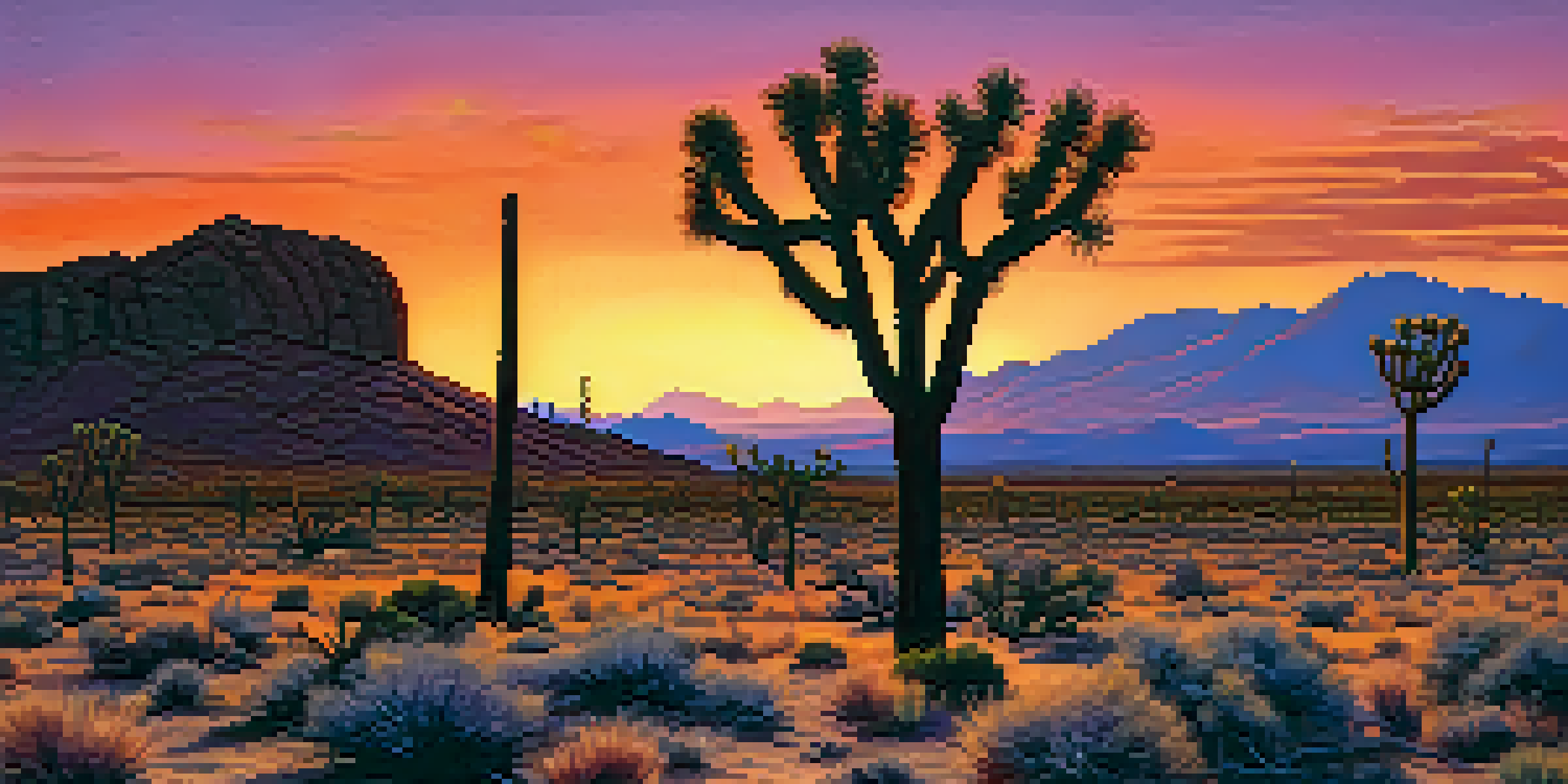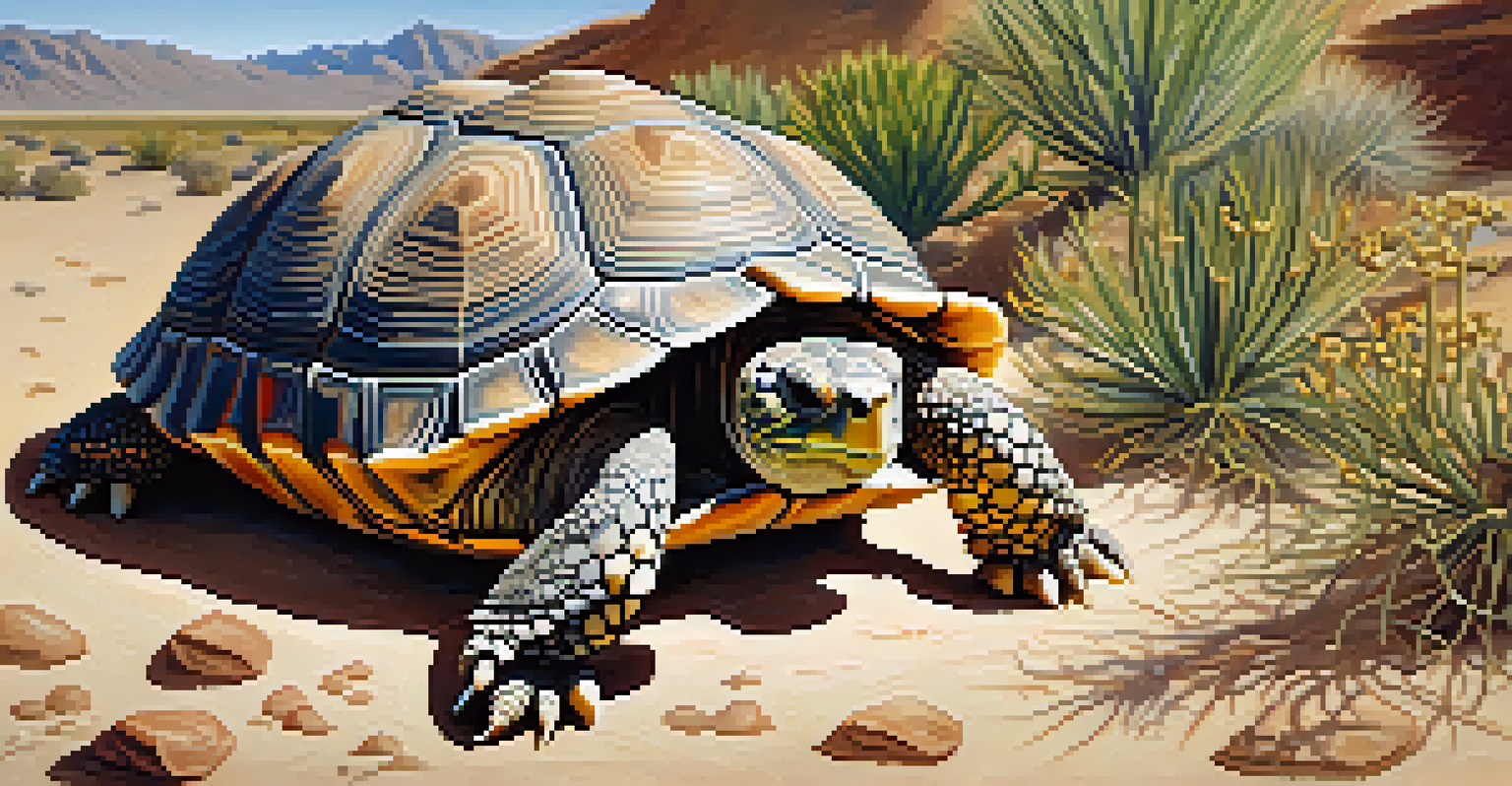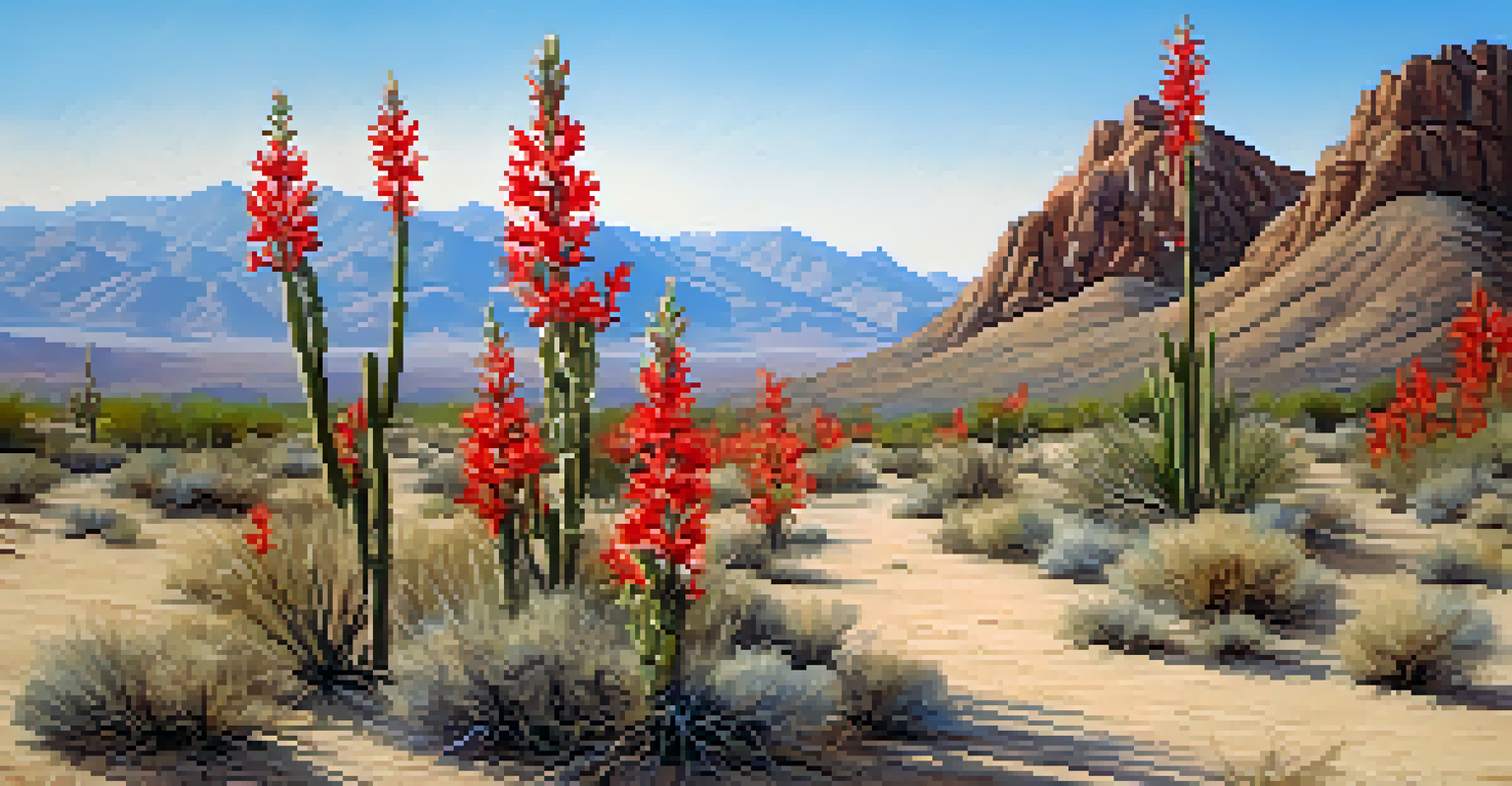Desert Ecosystems: Unique Flora and Fauna of the Mojave

Overview of the Mojave Desert Ecosystem
The Mojave Desert, located in the southwestern United States, is one of the most distinctive desert ecosystems in the world. Spanning parts of California, Nevada, Utah, and Arizona, it is characterized by its arid climate and unique geological features. This desert is not just a barren wasteland; it is a complex environment teeming with life adapted to extreme conditions.
The desert is not a barren wasteland; it is a complex ecosystem teeming with life adapted to extreme conditions.
With an average annual rainfall of only 3 to 10 inches, the Mojave faces challenges that have shaped its flora and fauna. The temperature can soar above 120°F in the summer, while winter nights may drop below freezing. These extreme conditions have led to fascinating adaptations among the species that call the Mojave home.
From the iconic Joshua tree to the elusive desert tortoise, the Mojave hosts a variety of organisms that have evolved to survive in this harsh landscape. Understanding the intricate relationships within this ecosystem is essential for appreciating the resilience of life in the desert.
Unique Flora of the Mojave Desert
The Mojave Desert boasts an array of unique plant species that have adapted to the challenging environment. One of the most iconic is the Joshua tree, known for its striking silhouette and ability to thrive in poor soil and extreme temperatures. These trees can live for hundreds of years and serve as crucial habitat for various wildlife.

Another remarkable plant is the creosote bush, which is often considered the backbone of the Mojave ecosystem. This hardy shrub can survive for decades and releases a resin that helps it conserve water. Its presence is vital for many desert animals, providing both food and shelter.
Diverse Life Thrives in Harsh Desert
The Mojave Desert is home to a variety of unique plant and animal species that have adapted to survive in extreme temperatures and limited water.
Additionally, the Mojave is home to the fascinating ocotillo plant, which, despite looking like a cactus, is actually a flowering shrub. In spring, it bursts into vibrant red blooms that attract hummingbirds and other pollinators. These plants exemplify the Mojave's ability to support life in seemingly inhospitable conditions.
Remarkable Fauna of the Mojave Desert
The Mojave Desert is home to a diverse range of animal species, many of which have evolved unique adaptations for survival. One such creature is the desert tortoise, a slow-moving reptile that can live for over 50 years. These tortoises dig burrows that provide shelter from the extreme heat and help maintain a stable environment for themselves and other organisms.
In every walk with nature, one receives far more than he seeks.
In addition to tortoises, the Mojave hosts a variety of mammals, such as the agile kit fox. This small, nocturnal predator has large ears that help dissipate heat and keen senses for locating prey. The kit fox plays an essential role in the desert food chain, controlling populations of rodents and other small animals.
Birds also thrive in the Mojave, with species like the roadrunner and the Gambel's quail adapting to the harsh surroundings. The roadrunner, known for its speed and distinctive appearance, has become a symbol of the desert. Their unique behaviors and adaptations showcase the incredible diversity of life in this arid environment.
Adaptations to Extreme Conditions
The flora and fauna of the Mojave Desert exhibit remarkable adaptations to cope with extreme temperatures and scarce water resources. Many plants have developed deep root systems to access underground moisture, while others have evolved waxy coatings on their leaves to minimize water loss. These adaptations are vital for survival in such a harsh climate.
Animals in the Mojave also exhibit fascinating strategies to endure the heat. For instance, many desert-dwelling species are nocturnal, coming alive at night when temperatures cool. This behavior helps them avoid the scorching daytime heat and reduces the risk of dehydration.
Major Threats to Desert Ecosystem
Urban development and climate change are significant threats to the Mojave Desert, jeopardizing its delicate balance and the species that inhabit it.
Additionally, some animals, like the kangaroo rat, have adapted to survive without drinking water by extracting moisture from their food. These extraordinary adaptations highlight the resilience of life in the Mojave Desert and the intricate balance between organisms and their environment.
Threats to the Mojave Desert Ecosystem
Despite its resilience, the Mojave Desert ecosystem faces numerous threats that jeopardize its unique flora and fauna. Urban development and industrial activities are encroaching on natural habitats, leading to habitat fragmentation and loss. As cities expand, many native species find themselves without the resources they need to thrive.
Climate change poses another significant threat, with rising temperatures and altered precipitation patterns affecting the delicate balance of the ecosystem. Many plants and animals may struggle to adapt to these rapid changes, leading to declines in population and biodiversity.
Conservation efforts are crucial to protect the Mojave Desert's unique species and their habitats. Initiatives to preserve land, restore ecosystems, and promote sustainable practices can help ensure that this remarkable desert remains a thriving environment for generations to come.
Cultural Significance of the Mojave Desert
The Mojave Desert holds deep cultural significance for various Indigenous peoples who have lived in harmony with this landscape for thousands of years. For these communities, the desert is not just a backdrop; it is a source of sustenance, spirituality, and identity. Traditional knowledge about the flora and fauna has been passed down through generations, providing insights into sustainable living.
The desert's unique features, such as the striking rock formations and vast open spaces, have also inspired artists, writers, and explorers. This cultural connection emphasizes the importance of the Mojave beyond its ecological value, highlighting the need for its preservation for future generations.
Cultural Heritage of the Mojave
The Mojave Desert holds deep cultural significance for Indigenous peoples, highlighting the need for preservation to honor both its ecological and cultural value.
Understanding the cultural heritage of the Mojave Desert enriches our appreciation of its biodiversity. By recognizing the interconnectedness of nature and culture, we can foster a deeper commitment to protecting this extraordinary ecosystem.
Exploring the Mojave: Conservation and Education
Exploring the Mojave Desert offers an opportunity to witness its unique ecosystems firsthand and learn about the importance of conservation. National parks and protected areas provide visitors with the chance to hike, camp, and observe the incredible diversity of life that thrives in this arid landscape. Educational programs and guided tours can deepen our understanding of the desert's flora and fauna.
Engaging with local conservation organizations can also empower individuals to take action in preserving the Mojave Desert. Volunteering for habitat restoration projects or participating in citizen science initiatives can make a meaningful difference in protecting vulnerable species and their habitats.

Ultimately, fostering a sense of stewardship for the Mojave Desert is essential for its future. By educating ourselves and others about its unique ecosystems and the challenges they face, we can inspire collective efforts to ensure that this remarkable landscape remains a vibrant sanctuary for both people and wildlife.